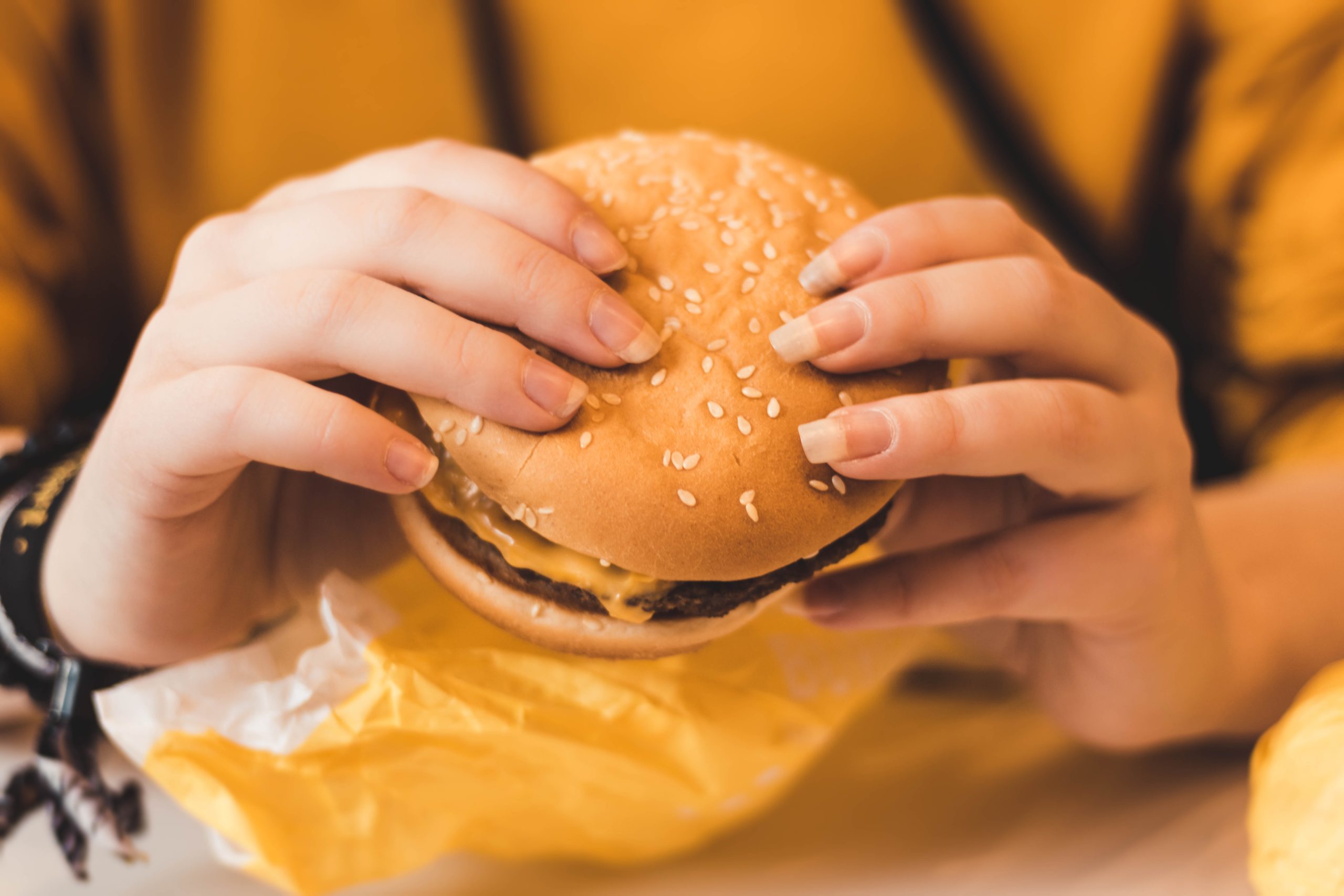High-quality Protein is Your Body's Best Friend
Part III: Bursting the Low-Protein Bubble
Over the years, we’ve all been exposed to mainstream ideas about protein consumption, especially if the protein comes from animals. Let’s debunk the following common myths that diets high in animal protein harm our health.
-
Myth: Animal protein is toxic to our kidneys.
Although adding more protein to your diet may increase your kidneys’ workload a little, that increase is insignificant compared with the immense amount of work your kidneys already do. (1) Furthermore, studies suggesting that higher protein can damage the kidneys are only relevant for people with diagnosed kidney disease, not healthy subjects!
-
Myth: Animal protein causes cancer, diabetes, and heart disease.
Some clinical studies have indicated a dose-response relationship between red meat consumption (unprocessed or processed) and cancer, suggesting that the higher the dose of red meat, the higher the frequency of cancer. However, The Annals recently published five systematic reviews, four of which showed results from randomized clinical trials (RCTs) and observational studies that analyzed the relationship between red meat and health, and the fifth examined people’s health-related values and preferences related to eating meat. Using the reviews, the authors produced a guideline saying adults needn’t change their meat-eating habits. Furthermore, other studies showed that meals containing more leucine correlated with more stable blood sugar levels, and that meals higher in isoleucine, lysine, and valine correlated with better insulin responses. (2, 3, 4, 5) All of those amino acids are abundant in animal protein.
-
Myth: Animal protein leads to mineral deficiencies and osteoporosis.
Of several factors that can impact bone-mineral density, animal protein content in the diet is one. However, meat-rich diets that contain adequate calcium and vitamin D balance the phosphorous content in meat, which limits the adverse effects that can come from high protein alone. (6)
-
Myth: High levels of TMAO and carnitine in animal protein cause inflammation.
Though this topic has been peeled apart many times, plant-based advocates still tout it as scientific truth. However, those who continue to deliver this message lack an understanding of the mechanisms involved in TMAO (trimethylamine N-oxide) and carnitine metabolism, and the conflicting studies on the topic. As of today, TMAO is not clinically proven to be problematic for meat-eaters. In fact, TMAO is higher in fish consumers than in meat consumers, and any adverse effects of it may be mediated more by glucose disposal than by carnitine or choline consumption! (7, 8, 9)
-
Myth: Animal protein is hard to digest.
This myth is common among people who have had a hard time re-introducing meat into their diets after years of avoiding it, and among those who simply recycle statements, they’ve read without understanding how protein digestion works. First off, as discussed in Part I, animal protein is typically of higher quality and more bioavailable than plant protein. Protein does appear to be the most difficult macronutrient to break down and the most likely to trigger immune reactions in vulnerable populations.
However, most of the proteins triggering such reactions are found in the plant kingdom—milk casein and egg whites are the only animal-sourced proteins on the growing list of proteins to which humans typically react. The main immunogenic proteins come from gluten, peanuts, nuts, seeds, soy, and corn because nature designed those proteins as defensive compounds to keep the plants from going extinct. Animal-based proteins have no such chemical defenses. Proteins from meat and organs can be hard to break down if a person suffers from a damaged gut and altered pH that together reduce the stomach acid needed for protein digestion. But supplemental hydrochloric acid (HCl) before meals and overall gut health improvements often resolve this problem. (10)
-
Myth: Eating animal protein is synonymous with the environmental decline and the mistreatment of animals.
Unfortunately, we live at a time when our destructive food systems—CAFOs (concentrated animal feeding operations) in particular—need a complete overhaul. However, deeming all animal foods as environmentally destructive and unethical because of CAFO problems is like defining all plant foods as destructive and unethical because of large-scale, soil-degrading monocropping practices by companies like Monsanto. In truth, regenerative farming, which mimics nature and both rebuilds the planet’s soils and offsets carbon emissions, involves plants and animals! Both are crucial for regenerating the soils and biodiversity harmed by industrial farming techniques, and neither can be removed from a healthy system without serious consequences. However, some consider plant-only farming and euthanizing existing farm animals as the ethical choice. That’s a bigger conversation than this article can address, but it’s one worth looking into! (11, 12, 13)
-
Myth: We can easily get protein from most foods in equal measure.
As we know, not all protein is equal, and not everyone can break down or assimilate proteins equally well. Therefore, to rely 100% on incomplete, less bioavailable plant-based proteins increases our chances of malnourishment and developing reactions to the immunogenic proteins in plants. Plant-based proteins are equal to animal-based proteins only in the minds of individuals. Although I believe our personal preferences can influence our biochemical reactions to food (i.e., psychological stress about eating a particular food can impair digestion), I don’t think they can help us bypass the scientific reality of basic human nutritional requirements. (14)
-
Myth: Animal protein is inherently toxic and can contribute to premature aging.
This may be the most confusing and misunderstood claims I often hear! As far as I can tell, it’s based on the loosely (if at all) understood topics of mTOR and IGF-1, of excess methionine consumption, the potential for a high carcinogenic load in poorly cooked meats, and lastly, the occurrence of toxins, such as antibiotics and hormones, in CAFO-sourced proteins.

Most of the negative impacts of animal protein are tied to specifics such as: quality of meat, method of cooking, and other foods consumed with meat, such as refined carbs!
Unfortunately, most people who design their diet around these myths are easily led to misunderstanding of how these mechanisms work. For instance, IGF-1 is triggered by protein, but it is also triggered by carbs! mTOR pathway is also helpful and necessary for muscle growth and maintenance and can be mediated by non-diet related activities, such as fasting. The impacts of high methionine consumption have been shown to be mediated by increasing dietary glycine and the impacts of IGF-1 are still not fully understood in science.
We also have control over our carcinogen and toxin load through choices such as cooking meat thoroughly in high-heat fats without burning it and eating grass-fed animals raised on small regenerative farms. Furthermore, carcinogens such as heterocyclic amines released through cooking meat can be greatly reduced by adding herbs, spices, and other plant-based compounds, such as rosemary, turmeric, garlic, and marinades containing acids like apple cider vinegar. I find this concern particularly strange because I tend to hear it from people who consume large amounts of questionable gluten, take no interest in their blood sugar or daily nutrient status beyond what’s in a salad, and are unaware of how many youth- and beauty-retaining processes rely on protein.
Both cell turnover and collagen production rely heavily on adequate protein synthesis! Of course, antioxidants and vitamins are also important, but they cannot do their jobs well in a protein-deficient body that struggles to convert them into their active forms. (15, 16, 17)

Caveats! When high protein may cause problems in certain individuals.
By this point, I’m sure you’re pretty clear on two points: 1) I’m a big fan of protein, which I believe is unfairly downplayed in the world of nutrition, and 2) the vast majority of protein articles I’ve found topping Google searches are far from honest representations of the current research on the topic—and that doesn’t include research yet to come, because nutrition is still in its infancy! If I hadn’t already journeyed through the desolation of low-protein land and found actual research that gave credence to my path to better health, I’d be just as scared and confused as anyone who sits in front of their internet-search results, weeding through article after article headlined with the horrible results of eating too much protein.

Researching controversial nutrition topics can lead to a lot of confusion!
However, just as protein’s downsides do not exist in myopic black-and-white terms, neither do protein’s upsides. Although the majority of this article highlights the benefits of protein and reexamines the myths that we can easily buy into with too little understanding, high-protein diets can cause problems for certain individuals. Please consider the following when weighing your options for dietary protein.
- First things first: I do NOT recommend that anyone eat a 100% protein diet! That would eventually induce rabbit starvation, a rare form of acute malnutrition thought to result from a nearly complete absence of fat in the diet. (18) Also known as protein poisoning, this leads to severe health consequences over time. Our bodies use fat for fuel when glucose is sparse and to absorb crucial nutrients, such as fat-soluble vitamins. Therefore, I see no reason to eat only protein, unless maybe while following a specific diet designed by your physician for short-term medical purposes. Otherwise, I recommend consuming protein in the context of a diet rich in fat and/or carbohydrates from whole foods.
- People with diagnosed kidney disease should be very careful about their protein intake and evaluate their diet with their doctor and dietician. Assuming their diet should contain some protein, I recommend that it come in the most bioavailable form, from pasture-raised animals.
- High-protein diets can exacerbate histamine intolerance symptoms. Histamine is an amine that forms when the amino acid histidine loses a carboxyl group (a carbon with two oxygens and a hydrogen) during normal protein decomposition. Found in almost every tissue of the body, histamine has many functions, including as a neurotransmitter that affects cognition, energy metabolism, and immune regulation.
Unfortunately, some of us struggle to metabolize or eliminate histamine properly (19), and consuming too much histidine can cause symptoms. Certain foods, such as meat that is aged, smoked, or cured, and dairy, seafood, and collagen powder, are naturally higher in histamine and can trigger symptoms in some people. Often, histamine intolerance arises from gut dysbiosis, perhaps caused by SIBO (20), or from inadequate stomach acid for breaking down protein-rich foods. These issues can slow protein digestion, which allows the protein to sit longer in the gut and produce histamine while it ferments. Another common cause of histamine intolerance is impaired production—thanks to SIBO, alcohol, genetics, and various drugs—of diamine oxidase (DAO), an enzyme in the jejunum that metabolizes histamine. (21)

fresh protein can make a world of difference on histamine symptoms
Fortunately, most people with histamine sensitivities do not need to avoid protein-rich foods—simply avoiding known high-histamine foods and eating only freshly cooked fresh or frozen meat can keep histamine to a tolerable level for most of us. (22) Taking DAO supplements just before a meal can also help some people. Simultaneously, reducing stress and repairing gut issues can improve or restore histamine tolerance in the long term, but some people may need to introduce or increase animal protein more slowly and carefully than others.
- Overcooked or poorly prepared meats can be a source of carcinogens, such as heterocyclic amines and polyaromatic hydrocarbons. This is a topic I take seriously. Unfortunately, many people don’t pay enough attention to their meat-cooking methods, which inevitably increases their chances of consuming these carcinogenic compounds. However, clinical studies have shown that we can offset the formation of such compounds by marinating and cooking meat in herbs such as rosemary and consuming greens, fermented foods, and alkaline foods, such as apple cider vinegar and algae (e.g., spirulina). (23, 24)
- Some people are adversely affected by higher consumption of iron and copper, both of which are abundant in red meats and organs and are toxic to anyone in excessive amounts. Those with the genetic condition hemochromatosis should pay special attention to their iron intake, and compelling data have indicated that vulnerable individuals who consume too much heme iron can develop excessive iron storage and iron toxicity. (25, 26, 27) Similarly, the body can store excessive dietary copper, too much of which can be toxic. Copper can also compete with zinc in the body and prevent its use where it’s needed. Although copper and iron excess most often results from supplementation rather than eating whole foods, our dietary intake of these minerals is worth understanding.
- The high phosphorous content in muscle meat can leach calcium from our bones if we consume a lot of meat without balancing it with adequate calcium. The myth about high-protein diets leading to mineral deficiencies and osteoporosis is only true if the high-protein diet lacks important minerals. (28) Calcium is high in bone broth and milk, but some people can’t tolerate the histamine levels in bone broth and MANY of my clients and fellow health-conscious humans do not like or tolerate dairy. Interestingly, low calcium intake seems to be common among vegans and paleo dieters alike. People in both camps who aim to get their calcium from plants are often deficient because their absorption of higher-calcium plant foods like spinach, nuts, and seeds is poor. Therefore, when eating a diet higher in animal protein, I consider it necessary for most people to supplement with a bioavailable calcium supplement, a food-based, fat-soluble vitamin supplement, and magnesium, and other trace minerals.
- Balancing methionine consumption with glycine is crucial for those consuming higher protein diets, from both plant and animal sources. Methionine is an amino acid abundantly found in animal and plant proteins, which is associated with poor health outcomes, such as a build of homocysteine and a depletion of B vitamins, glycine, and choline. High homocysteine is a risk factor for heart disease and mental illness, but this can be mediated by increasing glycine consumption, through eating more collagen and bone broth. Omnivores and vegetarians alike run the risk of adverse health effects of high methionine if they don’t consume adequate glycine. (32, 33)
In summary, adding more well-prepared, high-quality animal protein from regenerative farms is not only safe but protective for most of us and the environment, especially in the context of a well-tolerated whole-foods diet. In any case, I advise adding in different sources of animal protein a little at a time so you can gauge your individual response to them and tailor your diet to your body and its needs.
In Part IV, the final section of High-Quality Protein is Your Body’s Best Friend, we’ll consider old versus new beliefs about protein.





